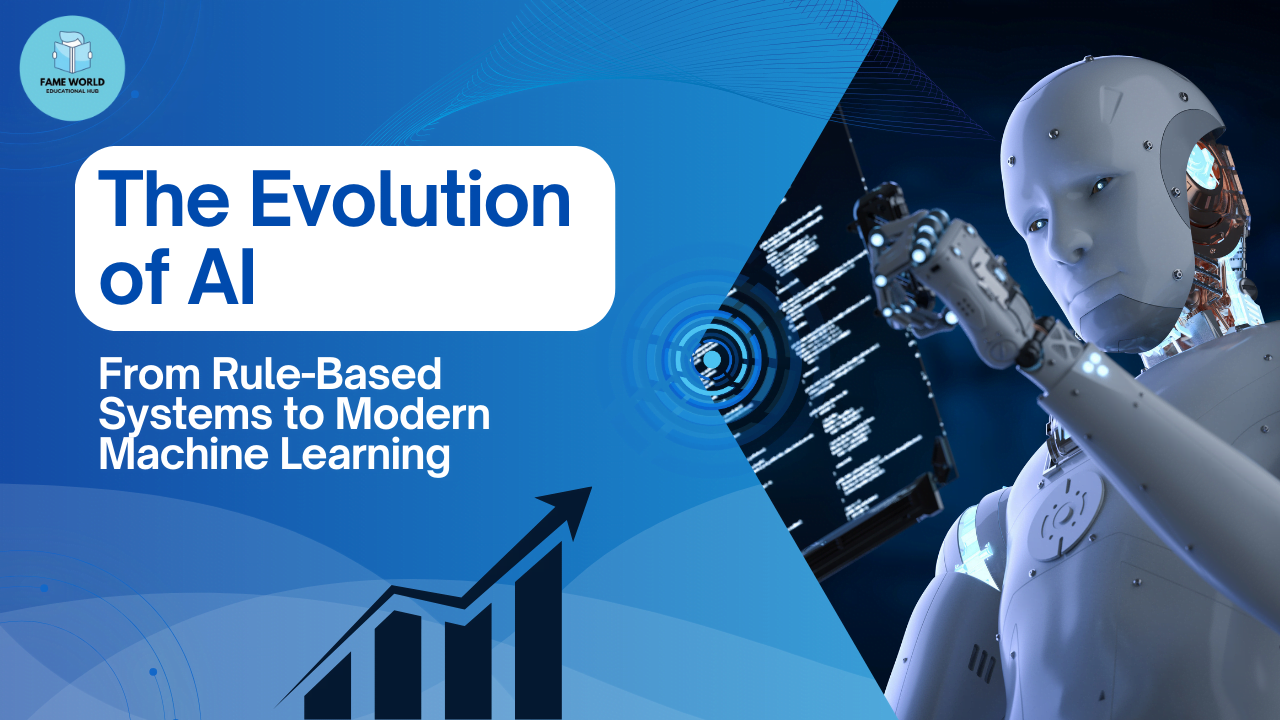Artificial Intelligence (AI) has undergone a remarkable transformation since its inception. What began as simple rule-based systems has evolved into sophisticated machine learning models capable of performing complex tasks. This journey from basic algorithms to advanced neural networks reflects both technological progress and deepening understanding of intelligence itself. In this blog post, we’ll explore the evolution of AI, examining its key stages and the breakthroughs that have shaped its development.
1. Early AI: Rule-Based Systems
1.1 The Birth of AI
The origins of AI can be traced back to the mid-20th century when researchers began exploring the concept of artificial intelligence. Early AI systems were primarily rule-based, relying on explicit instructions to perform tasks. These systems followed predetermined rules and lacked the ability to learn or adapt.
1.2 Expert Systems
One of the first practical applications of AI was in expert systems. Developed in the 1960s and 1970s, expert systems used a set of rules to mimic the decision-making abilities of human experts. A well-known example is MYCIN, an expert system designed for medical diagnosis. MYCIN used a series of rules to recommend treatments based on patient symptoms.
Key Characteristics of Rule-Based Systems:
- Fixed Rules: Operate based on a predefined set of rules.
- No Learning Capability: Cannot improve performance or adapt to new situations.
- Deterministic: Produce the same output for the same input every time.
2. The Rise of Machine Learning
2.1 From Rules to Data
The limitations of rule-based systems led to the development of machine learning (ML), a subset of AI that focuses on using data to improve performance. Instead of relying on explicit rules, machine learning algorithms learn patterns from data and make predictions or decisions based on this learning.
2.2 Supervised Learning
One of the earliest and most common forms of machine learning is supervised learning. In supervised learning, algorithms are trained on labeled data, where the correct output is known. The algorithm learns to map inputs to outputs based on this training data.
Examples of Supervised Learning Algorithms:
- Linear Regression: Used for predicting continuous values.
- Decision Trees: Used for classification and regression tasks.
- Support Vector Machines (SVM): Used for classification tasks with clear margins of separation.
2.3 Unsupervised Learning
Unlike supervised learning, unsupervised learning deals with unlabeled data. The goal is to find hidden patterns or intrinsic structures within the data. Common unsupervised learning techniques include clustering and dimensionality reduction.
Examples of Unsupervised Learning Algorithms:
- K-Means Clustering: Groups data into clusters based on similarity.
- Principal Component Analysis (PCA): Reduces the dimensionality of data while preserving its variance.
2.4 The Emergence of Neural Networks
Neural networks, inspired by the human brain’s structure, marked a significant milestone in machine learning. Early neural networks, known as perceptrons, were limited in their capabilities. However, advances in neural network architectures and training techniques led to the development of deep learning.
3. Deep Learning: The Modern Era
3.1 The Rise of Deep Learning
Deep learning, a subset of machine learning, involves training large neural networks with many layers. These deep neural networks are capable of learning complex representations of data and have revolutionized various fields, including computer vision, natural language processing, and speech recognition.
3.2 Breakthroughs and Applications
Several breakthroughs have accelerated the progress of deep learning:
- Convolutional Neural Networks (CNNs): Excellent for image processing and computer vision tasks.
- Recurrent Neural Networks (RNNs): Effective for sequential data, such as language and time series.
- Transformers: Revolutionized natural language processing with models like GPT-3 and BERT, enabling advanced language understanding and generation.
Notable Applications of Deep Learning:
- Image Recognition: Systems like Google Photos use CNNs to categorize and tag images.
- Natural Language Processing: Chatbots and virtual assistants utilize transformers for understanding and generating human language.
- Autonomous Vehicles: Self-driving cars rely on deep learning for object detection and navigation.
3.3 The Future of AI
The future of AI is likely to see further advancements in several areas:
- General AI: Research is ongoing into developing AI that can perform any intellectual task that a human can.
- Ethical AI: As AI systems become more integrated into society, addressing ethical considerations and ensuring fairness and transparency will be crucial.
- AI and Human Collaboration: AI will increasingly complement human abilities, leading to more effective and efficient collaboration across various domains.
4. Conclusion
The evolution of AI from rule-based systems to modern machine learning reflects the field’s dynamic nature and the rapid pace of technological advancement. From early expert systems to sophisticated deep learning models, AI has transformed industries and everyday life. As we continue to push the boundaries of what AI can achieve, understanding this evolution helps us appreciate the progress made and the exciting possibilities that lie ahead.
Whether you’re a developer, researcher, or simply curious about the future of technology, staying informed about AI’s evolution provides valuable insights into how we interact with and shape our world through intelligent systems.



